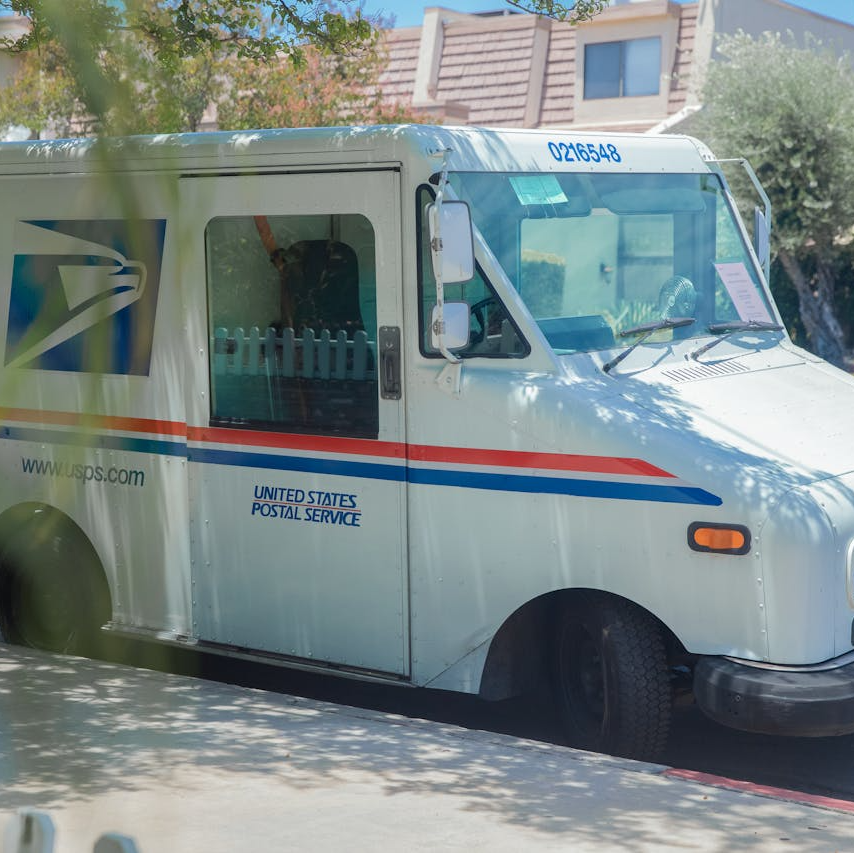Key Takeaways
- The Postal Service Health Benefits (PSHB) program, launching in 2025, will offer tailored health insurance coverage specifically for USPS employees and retirees.
- Preparing for the PSHB program involves understanding key dates, the enrollment process, coverage benefits, Medicare integration, and selecting the right plan.
Postal Services Health Benefits (PSHB): What to Expect This Year and the Next
The Postal Service Health Benefits (PSHB) program is set to launch on January 1, 2025. This new initiative, mandated by the Postal Service Reform Act of 2022, aims to provide more tailored healthcare benefits for nearly 1.9 million United States Postal Service (USPS) employees, retirees, and their families. As the launch date approaches, it’s essential for those affected to understand the upcoming changes and how to prepare.
Overview of PSHB
The PSHB program is designed to offer specialized health insurance options for USPS employees and retirees. This program will replace the current Federal Employee Health Benefits (FEHB) coverage for USPS personnel, providing more focused and comprehensive healthcare benefits. The primary objective of the PSHB is to enhance healthcare delivery while reducing costs and improving the efficiency of benefits management.
Legislative Background
The Postal Service Reform Act of 2022 was enacted to address long-standing issues within the USPS, including the management of employee benefits. One of the critical elements of this reform is the creation of the PSHB program. The rationale behind this initiative is to streamline healthcare benefits, reduce redundant coverage, and ensure that USPS employees and retirees have access to high-quality healthcare services.
Key Program Highlights
The PSHB program introduces several new features and improvements over the existing FEHB system:
- Tailored Coverage: The PSHB program offers specific plans designed to meet the unique needs of USPS employees and retirees. These plans include comprehensive medical, dental, vision, and prescription drug coverage.
- Enhanced Services: The program aims to provide enhanced healthcare services, including mental health support, telehealth, maternal health, fertility treatments, and gender-affirming care. These services are tailored to address the diverse needs of the postal workforce.
Important Dates and Enrollment Phases
To successfully transition to the PSHB program, it’s crucial to be aware of the key dates and enrollment phases:
April 1, 2024: Special Enrollment Period
The special enrollment period begins on April 1, 2024, allowing USPS employees and retirees to make their initial selections for the PSHB program. During this time, it’s important to evaluate the new plan options and choose the coverage that best suits your needs.
Fall 2024: Open Season
The first open season for the PSHB program will occur in the fall of 2024. This is the regular annual period when beneficiaries can review and make changes to their health plan choices.
January 1, 2025: Official Launch
On January 1, 2025, the PSHB program officially takes effect, replacing the existing FEHB coverage for USPS employees and retirees.
Understanding PSHB Benefits and Coverage
The PSHB program will offer a variety of health benefits designed to meet the needs of USPS employees and retirees:
Medical Coverage
The program provides comprehensive medical coverage, including preventive care, hospitalization, and outpatient services. This ensures that beneficiaries receive high-quality care without the need for additional supplementary insurance plans.
Dental and Vision
Enhanced dental and vision benefits are included in the PSHB plans. These benefits address critical aspects of overall health, providing comprehensive care for USPS employees and their families.
Prescription Drug Coverage
The PSHB program integrates prescription drug plans, ensuring access to necessary medications. This integration simplifies the management of healthcare benefits and ensures comprehensive coverage.
Additional Services
The program offers access to a range of additional services, such as mental health support, telehealth, maternal health, fertility treatments, and gender-affirming care. These services are crucial for addressing the diverse healthcare needs of the postal workforce.
Medicare Integration
A significant aspect of the PSHB program is its integration with Medicare, particularly for retirees. Under the new law, USPS retirees and their eligible family members must enroll in Medicare Parts B and D when they become eligible, typically at age 65. This integration aims to streamline benefits and provide more efficient healthcare coverage.
Benefits of Medicare Integration
Cost Efficiency
Integrating Medicare with the PSHB program is expected to reduce overall healthcare costs by eliminating duplicate coverage. This coordination helps manage expenses more effectively, benefiting both the USPS and its retirees.
Comprehensive Coverage
By combining the benefits of Medicare and the PSHB program, retirees can enjoy more comprehensive healthcare coverage. This includes access to a broader range of services and providers, enhancing their overall healthcare experience.
Seamless Benefits Management
Simplifying the management of benefits provides retirees with a more seamless healthcare experience, particularly for those with chronic conditions or complex healthcare needs. This integration ensures consistent and coordinated care.
Choosing the Best PSHB Plan
Selecting the right PSHB plan involves careful consideration of several factors:
Healthcare Needs
Assess your current health status and anticipated healthcare needs. Choose a plan that offers the necessary coverage for your specific medical conditions and requirements.
Financial Considerations
Evaluate the cost of premiums, deductibles, copayments, and out-of-pocket expenses. Select a plan that fits your budget while providing comprehensive coverage.
Provider Network and Accessibility
Ensure that your preferred healthcare providers and facilities are included in the plan’s network. Consider the accessibility of care, especially if you travel frequently or live in a rural area.
Additional Benefits
Review the additional benefits offered by the plans, such as dental, vision, and mental health services. These benefits can significantly impact your overall healthcare experience.
Role and Expectations of Carriers
OPM has outlined specific responsibilities and expectations for carriers participating in the PSHB program to ensure the smooth operation and high-quality delivery of healthcare benefits.
Key Responsibilities for Carriers
Negotiation of Benefits and Rates
Carriers must engage in thorough negotiations with OPM to finalize the benefits and rates for their plans. This ensures that the plans are both comprehensive and affordable for USPS employees and retirees.
Quality and Accessibility of Care
Carriers are expected to provide high-quality healthcare services, including essential areas such as gender-affirming care, maternal health, fertility treatments, obesity management, mental health services, substance use disorder treatment, and telehealth benefits.
Customer Service and Outreach
Emphasizing the importance of outreach and customer service, carriers must assist enrollees in navigating their benefits, particularly in coordinating benefits between the PSHB program and Medicare.
Preparing for the Change
Preparing for the transition to the PSHB program involves several key steps for USPS employees and retirees:
Stay Informed
Keep up-to-date with information provided by USPS and OPM regarding the PSHB program. Regularly check for updates and new details about the enrollment process and plan options.
Evaluate Your Current Coverage
Review your current FEHB plan to understand what coverage you have and what you might need in the new PSHB program.
Compare Plan Options
During the enrollment periods, compare the available PSHB plans to find the one that best meets your healthcare needs and financial situation.
Prepare Documentation
Ensure you have all necessary documentation ready for the enrollment process, including Medicare enrollment if you are eligible.
Future Considerations and Impacts
The implementation of the PSHB program will have long-term implications for USPS employees, retirees, and the broader health benefits landscape.
Impact on Premiums
The transition to the PSHB program may lead to adjustments in premium rates for both PSHB and FEHB enrollees. It is essential to monitor these changes and understand their impact on your overall healthcare costs.
Plan Offerings
Over time, carriers may adjust their plan offerings based on the costs and benefits of participating in both the FEHB and PSHB programs. This could result in changes to the available plans and benefits.
Enhanced Benefits Coordination
OPM continues to emphasize better coordination between the PSHB program and Medicare, particularly for retirees enrolled in both. This coordination aims to streamline benefits and ensure optimal coverage without the burden of navigating complex benefit structures.
Preparing for Comprehensive Health Benefits
The launch of the Postal Service Health Benefits (PSHB) program represents a major shift in healthcare benefits for USPS employees, retirees, and their families. Mandated by the Postal Service Reform Act of 2022, this program aims to provide tailored and comprehensive healthcare coverage, replacing the existing FEHB coverage starting January 1, 2025. By understanding the PSHB program’s details, timeline, enrollment process, and long-term implications, USPS employees and annuitants can better prepare for the upcoming changes and make informed decisions about their healthcare coverage.
Contact Information:
Email: [email protected]
Phone: 6615550123











